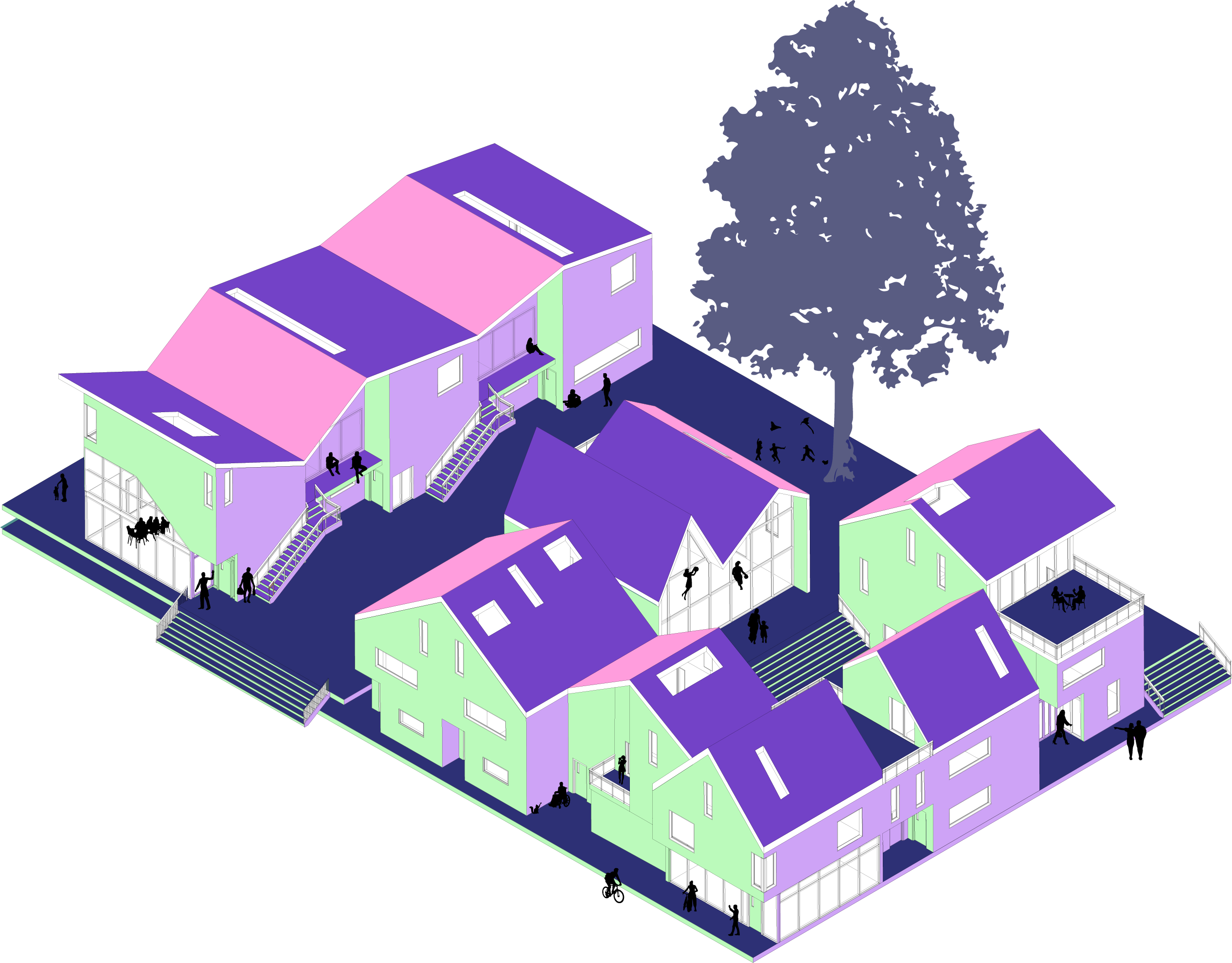
Experimentation with Colors and Occupany Distribution:




Typical Tenant Experience:




Typical Circulation:

15. Affordable Housing
This data visualization represents the reality of affordable housing, which is often crowded and compressed, consisting of stacked modular repetitions.
This project is an extension of an affordable housing project done as a practice assignment during the first semester of our capstone studio. After the project was finished, I became hyper-fixated on the topic of affordability and housing. I dug deeper through research, thus creating this visualization of the reality of living in these affordable housing units.
The color-coded diagrams were initially made to show different types of roofings, unit occupancies, amenities, and sunlight exposure. In my reiteration, I made the units in 3 colors: green, purple, and pink. I repeated them to the point where the amount of glazing and detailed list of amenities and occupancies did not necessarily matter anymore.
Instructed by Taiji Miyasaka.
Research:
1. According to the United Nations, around 1.6 billion people worldwide live in inadequate housing, with many facing issues such as overcrowding, lack of access to basic amenities, and insecurity of tenure.
2. While efficient, compact designs can sometimes result in cramped living conditions. Lack of adequate space and storage can impact the comfort and functionality of the housing units.
3. Due to budget constraints, affordable housing projects may prioritize functionality over aesthetics. This can result in buildings that lack visual appeal and may contribute to a perception of stigmatization for residents.
4. Affordable housing projects may be located in areas with limited access to public transportation, job opportunities, and essential services. This can lead to social isolation and increased transportation costs for residents.
5. Not all affordable housing projects incorporate sustainable design features, leading to increased environmental impact and higher utility costs for residents in the long run.
6. In some cases, well-intentioned affordable housing projects may inadvertently contribute to gentrification, driving up property values in the surrounding areas and displacing existing low-income residents.
This data visualization represents the reality of affordable housing, which is often crowded and compressed, consisting of stacked modular repetitions.
This project is an extension of an affordable housing project done as a practice assignment during the first semester of our capstone studio. After the project was finished, I became hyper-fixated on the topic of affordability and housing. I dug deeper through research, thus creating this visualization of the reality of living in these affordable housing units.
The color-coded diagrams were initially made to show different types of roofings, unit occupancies, amenities, and sunlight exposure. In my reiteration, I made the units in 3 colors: green, purple, and pink. I repeated them to the point where the amount of glazing and detailed list of amenities and occupancies did not necessarily matter anymore.
Instructed by Taiji Miyasaka.
Research:
1. According to the United Nations, around 1.6 billion people worldwide live in inadequate housing, with many facing issues such as overcrowding, lack of access to basic amenities, and insecurity of tenure.
2. While efficient, compact designs can sometimes result in cramped living conditions. Lack of adequate space and storage can impact the comfort and functionality of the housing units.
3. Due to budget constraints, affordable housing projects may prioritize functionality over aesthetics. This can result in buildings that lack visual appeal and may contribute to a perception of stigmatization for residents.
4. Affordable housing projects may be located in areas with limited access to public transportation, job opportunities, and essential services. This can lead to social isolation and increased transportation costs for residents.
5. Not all affordable housing projects incorporate sustainable design features, leading to increased environmental impact and higher utility costs for residents in the long run.
6. In some cases, well-intentioned affordable housing projects may inadvertently contribute to gentrification, driving up property values in the surrounding areas and displacing existing low-income residents.